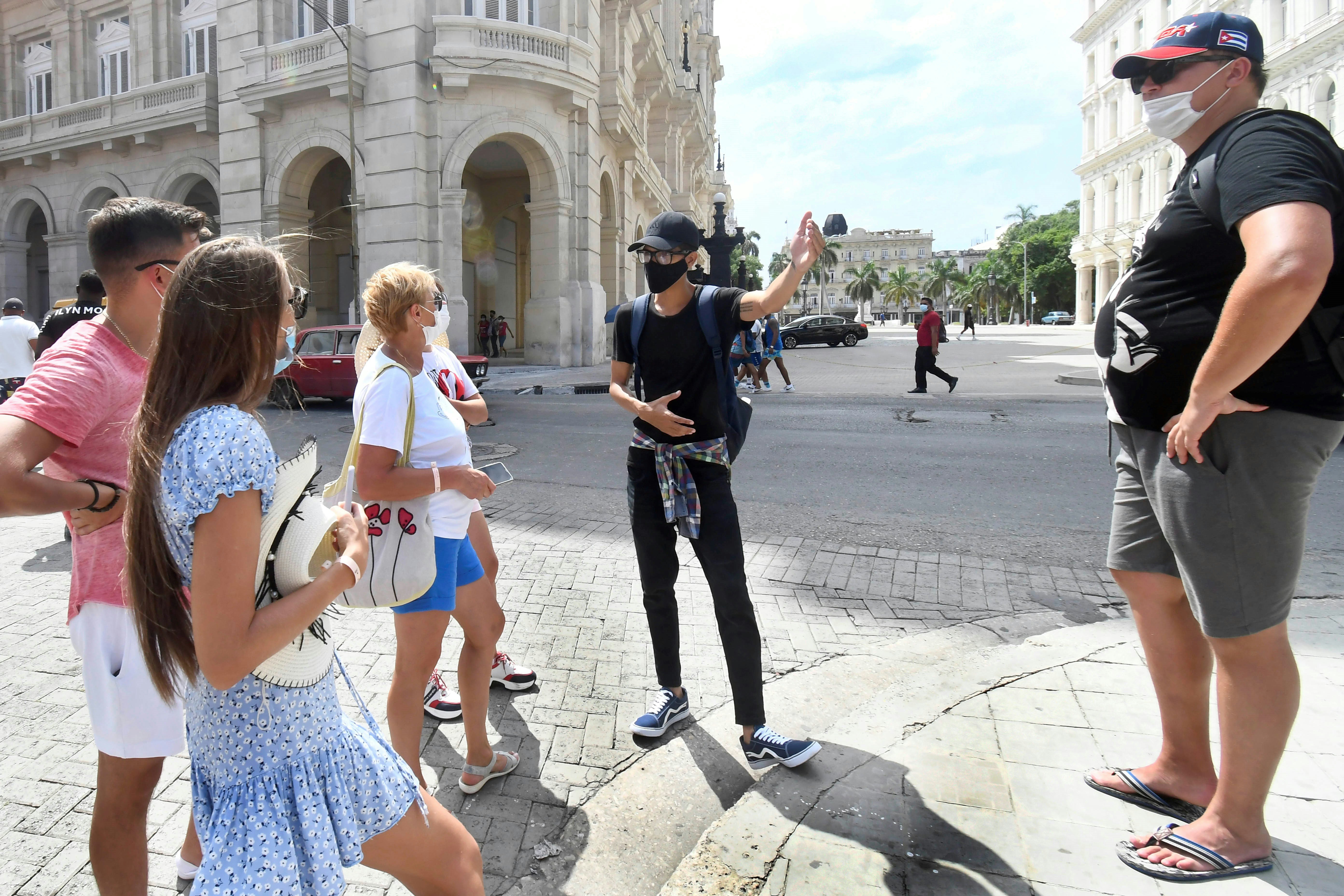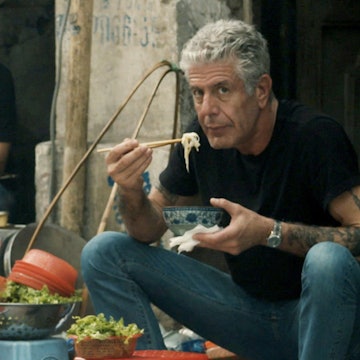
The 8 best museums in Havana for art, history and cultural icons

Mar 12, 2022 • 7 min read

The landmark Museo de la Revolucion (Museum of the Revolution) housed in the former Presidential Palace in Cuba's capital © EQRoy / Shutterstock
Despite a few shortages in recent years, the Cuban capital certainly isn’t lacking in culture – Havana has more than 50 venerable museums, and many of them are free to visit.
You’ll find a museum dedicated to playing cards, at least three showcasing pharmaceuticals, a homage to Hemingway, plus houses, villas and forts honoring famous names such as José Martí, Simón Bolívar, Napoleon and Che Guevara.
If you don’t like art, you can ponder the nuances of Havana Club at a rum museum. If history isn’t your thing, you can visit a community-inspired museum of barbers. From poignant to propagandist, here are the eight best museums in Havana.
Museo Nacional de Bellas Artes
Best museum for Cuban art
Cuba is a powerhouse of art, and Museo Nacional de Bellas Artes, spread over two campuses on the cusp of Habana Vieja and Centro Habana, is its creative apex. The best section of the museum to visit if you’re short on time is the seminal Cuban collection, housed in a clean-lined modernist building next to the Museo de la Revolución.
Displays follow a rough chronology starting on the third floor and working down. Prepare to be enlightened by the politically tinged pop-art of Raúl Martínez, the colorful abstraction of René Portocarrero, and the lucid flowers and fruits of Amelia Peléaz. Specific paintings to seek out include La Gitana Tropical, sometimes called the “Latin Mona Lisa,” by Victor Manuel, and Tercer Mundo by Wifredo Lam, Cuba’s most famous and influential artist. It is worth paying an extra CUP$50 (US$2) for a personalized guided tour.

Museo de la Revolución
Best museum for recent Cuban history
Arguably the biggest exhibit at the emblematic Museo de la Revolución is the building itself. Housed in the former presidential palace, a gloriously eclectic building constructed between 1913 and 1920, the museum has grandiose rooms that are opulent and positively gleaming after a recent restoration. Hogging the limelight is the mirrored Salón de los Espejos, modeled on the famous gallery at Versailles, and the glittering Salón Dorado, an erstwhile banqueting hall.
On your way in, stop at the palatial staircase overlooked by a bust of José Martí – it’s marred by sporadic bullet holes, the legacy of an unsuccessful attempt to assassinate then-president Fulgencio Batista in 1957.
The main role of the museum is to visually archive the history of Cuba from indigenous times to the present day with a strong emphasis on events from 1953 onward. It’s primarily aimed at Cubans, and foreign visitors may find some of the written and photographic information a little prosaic and propagandist.
Larger exhibits await outside. The Pavillón Granma contains a replica of the 18m (59ft) yacht that carried Castro and his band of 81 revolutionaries to Cuba from Mexico in December 1956. A round-the-clock guard watches over it as if it were the museum’s most precious heirloom. In the surrounding gardens, you’ll also spy a British Sea Fury used by the Cubans during the Bay of Pigs in 1961 and the engine of an American U-2 plane shot down during the Cuban missile crisis the following year.

Museo de la Ciudad
Best museum for getting to know Havana
Another museum where the building is the star, the Museo de la Ciudad is a somewhat random trajectory of Havana’s history from 1519 to 1902, housed in a colonnaded baroque palace guarded by a statue of former City Historian Eusebio Leal. Dating from the 1770s, the palace was once home to Cuba’s Spanish rulers and later briefly provided digs for US military governors and Cuba’s first three presidents.
Arranged around a grandiose plant-filled courtyard adorned with a white-marble rendering of Christopher Columbus, the museum mixes important chapters of Havana’s history with a trove of surviving relics in more than 40 interconnecting rooms. Look out for captured Spanish cannons, the 17th-century Giraldilla statue (the longstanding symbol of Havana) and Cuba's first flag, raised by Narciso López in Cárdenas in 1850.
Museo de Artes Decorativas
Best museum for interior design
If you want to see how Havana’s richest lived before Fidel Castro’s revolution steamrolled the Cuban aristocracy, Museo de Artes Decorativas offers an insight. Half-hidden in a residential part of the neighborhood of Vedado, the museum with its impressive neoclassical facade is often missed by mainstream tourists but it’s worth the minor detour. The opulent residence was built for mega-rich Spanish-Cuban businessman José Gómez Mena in 1924 in a style redolent of a grand European mansion.
Inside, you can peruse Louis XV furniture, Chantilly porcelain, an art deco bathroom and an abundance of expensive glassware, all of it amassed by Mena’s wife, Maria, who had a penchant for throwing extravagant parties. The equally luxuriant garden out back is less French and more Italian, anchored by statues and busts representing the four seasons.
Museo Napoleónico
Best museum for Francophiles
You probably didn’t come to Cuba to enhance your knowledge of Napoleon Bonaparte, but after visiting the magnificent Museo Napoleónico, your grasp of the diminutive Corsican general is sure to be radically improved.
Welcome to one of the best collections of Napoleon-related artifacts in the world. More than 7000 objects associated with France’s erstwhile emperor have been expertly curated by the City Historian’s Office and displayed in a lavish mansion built in the 1920s in the style of Florentine Renaissance villa. The museum showcases swords, letters, statues, paintings, furniture and – a little chilling amid it all – Bonaparte’s bronze death mask made two days after his passing by his personal physician.
Wondering why this museum is in Cuba? The collection was amassed by a Cuban-Venezuelan sugar baron named Julio Lobo in the 1940s and ’50s who had a lifelong infatuation with Napoleon. When Lobo left Cuba in 1960, the artifacts were impounded by the state, and the museum was opened the following year.

Museo de la Farmacia Habanera
Best living museum
Built in an era when shop interiors looked more like posh Parisian clubs, Museo de la Farmacia Habanera, still a working pharmacy, opened its doors in 1853 as the passion project of a Catalan immigrant named José Sarrá.
After being nationalized in the 1960s, the pharmacy closed temporarily in 1999, but it was reopened five years later after a masterful restoration by the City Historian. The intricately carved wooden shelving, colorful vitrales (stained glass) and rows of painted ceramic pots recall the pharmacy’s late 19th-century high watermark and contrast with the comings and goings of contemporary residents who pop in to buy the mainly homeopathic medicines. Two adjoining rooms showcase old diagrams and fascinating medical contraptions that explain the store’s history with mainly Spanish captions.
Museo de Comandancia del Che
Best museum for Guevara stories
If you needed a reason to visit the huge Cabaña fort on the eastern side of Havana harbor on top of its impressive 750m-long battlements, home in on this Che Guevara museum stuffed with artifacts and photos from the life and times of a man whose myth often gets blurred with the reality.
Guevara used the fort as his headquarters for a brief five months following the triumph of the revolution in 1959. Here, he meted out revolutionary justice to the henchmen of former president Fulgencio Batista with barely a lawyer in sight. The diminutive museum occupies the site of his former offices and catalogs some of his career highlights from his time as a trainee doctor in Argentina to his reincarnation as a rebel commander in Cuba’s eastern mountains.
You’ll need to buy a ticket for the whole fort to see the museum, but you’ll also get access to souvenir shops, cafes, stupendous views and the Cañonazo, a nightly cannon-firing ceremony.

Museo Hemingway
Best museum for book nerds
Of the many homages to Hemingway around the world, the handsome Museo Hemingway in the Havana suburb of San Francisco de Paula is, arguably, the most authentic. Cocooned in the Finca Vigia, the out-of-town estate where Hemingway lived between 1940 and 1960, it presents the house exactly as it was in the 1950s. Indeed, you almost expect Hemingway to walk in at any minute, a little tipsy after half a dozen daiquiris, and flop down amid the books, taxidermy and impressive vinyl collection.
To protect the house’s interior, visitors aren’t allowed inside; instead you must peer in through the open doors and windows. The only area you can enter is a three-story tower next to the main house where Hemingway used to write, often standing up, equipped with a typewriter, telescope and suitably inspiring views north toward the distant city.
The wooded grounds contain a serene swimming pool, a less alluring cockfighting ring and Hemingway's beloved fishing boat, Pilar, which he used to hunt German U-boats during World War II.
You might also like:
7 free things to do in Havana
Top 6 day trips from Havana
Havana's public parks offer a taste of the real Cuba













